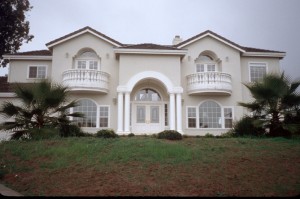Current Bay Area Architecture
Written 1997, revised slightly since
It’s very sad that international travelers are told by our local architectural critics and Sunday Home section editors that the ugly, disjointed, broken, truncated, warped masses of disparate colors you can find in San Francisco represent the best of current Bay Area Architecture. The media find them interesting and different. They point to them as being “art”, not just building, in that they are a reflection of our society. This is the furthest thing from the truth.
In recent years, the Bay Area has benefited from an economic boom created by Silicon Valley’s computer industry much as Venice benefited from the economic boom created by new trade with the east in the fifteenth century. Local architects have designed thousands of luxurious private homes in the rolling hills surrounding San Francisco Bay just as Andrea Palladio and his contemporaries designed luxurious villas on the mainland near Venice. As in Palladio’s time, these luxurious private homes have many features in common.
Their main characteristic is a sense of beauty and comfort that make coming home a relaxing and psychologically healing experience. I have been fortunate to have designed over 200 homes, many of them luxurious and all of them elegant. I have developed stylistic traits which are shared by most of these homes and which by no means do I claim to have invented. In fact, you see these same design patterns in many of the homes designed by my peers.
For the most part, the homes have been designed from the inside out. Bedrooms and baths have sought quiet and privacy, while living, dining, and family rooms have been arranged to optimize sun orientation and exterior views. What the homes look like from the exterior has really only been a concern from the driveway approach and the entry elevation, while side and rear elevations have mostly been dictated by interior window and door placement.
I have borrowed the format of one of my favorite books, Christopher Alexander’s “Pattern Language”, identifying individual design patterns that are common to most of my homes. Some of these patterns were preferences developed in childhood, some have been borrowed from designers I worked with along the way, and some were discovered in programming sessions with my clients.
